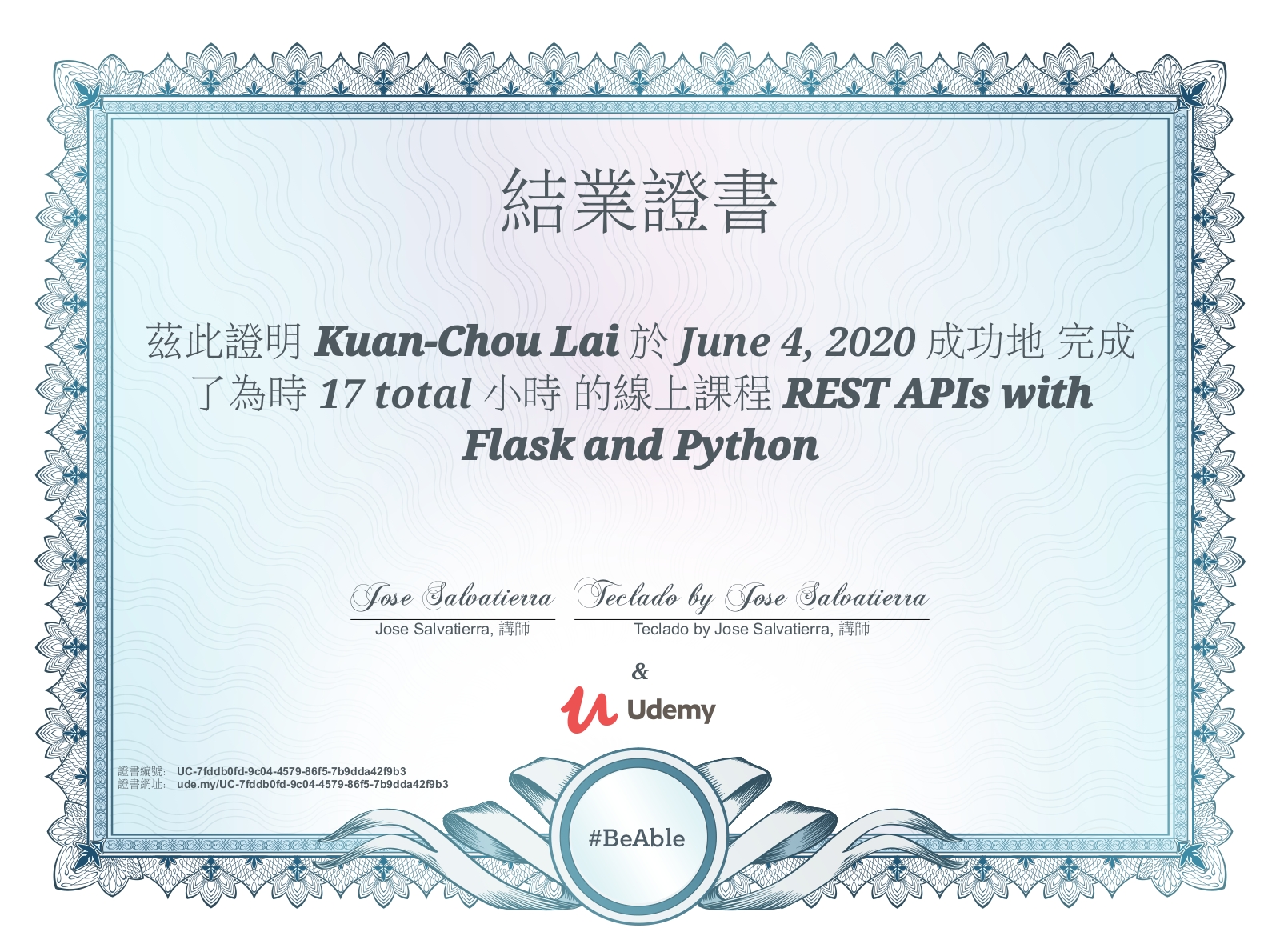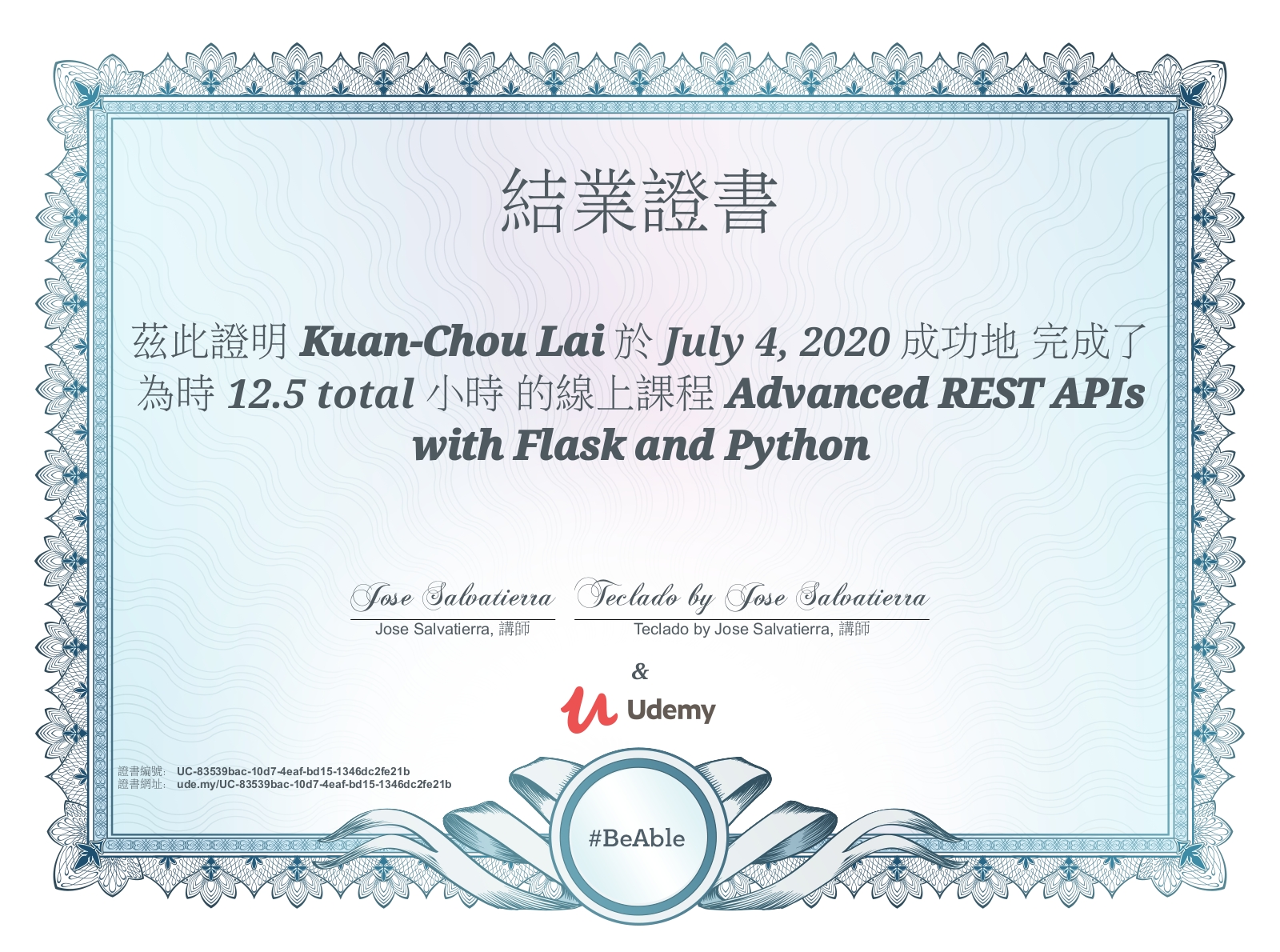RESTful APIs with Flask¶
This repository documents my journey of learning how to build RESTful APIs using Flask. It includes step-by-step implementations of various concepts, from basic API design principles to advanced features like authentication, database integration, deployment, and third-party integrations.
The content is based on two Udemy courses: "REST APIs with Flask and Python" and "Advanced REST APIs with Flask and Python". Each section highlights key topics, tools, and techniques, making it a comprehensive resource for anyone looking to learn Flask for API development.
About This Project¶
The goal of this project is to: - Learn and experiment with Flask for building RESTful APIs. - Understand best practices for API design and implementation. - Explore integrations with databases, authentication, and other web technologies.
Features¶
- RESTful API Design: Follows REST principles for clean and scalable APIs.
- Flask Framework: Built using Flask for simplicity and flexibility.
- Database Integration: Includes examples of working with databases like SQLite or SQLAlchemy.
- Authentication: Demonstrates how to secure APIs with authentication mechanisms.
- Error Handling: Implements robust error handling for better user experience.
How to Use This Repository¶
Feel free to browse the code, read the documentation, and run the examples. If you're new to Flask or REST APIs, this project can serve as a learning resource.
Getting Started¶
-
Clone the repository:
-
Install dependencies:
-
Run the application:
Thank you for visiting, and I hope you find this project helpful!

